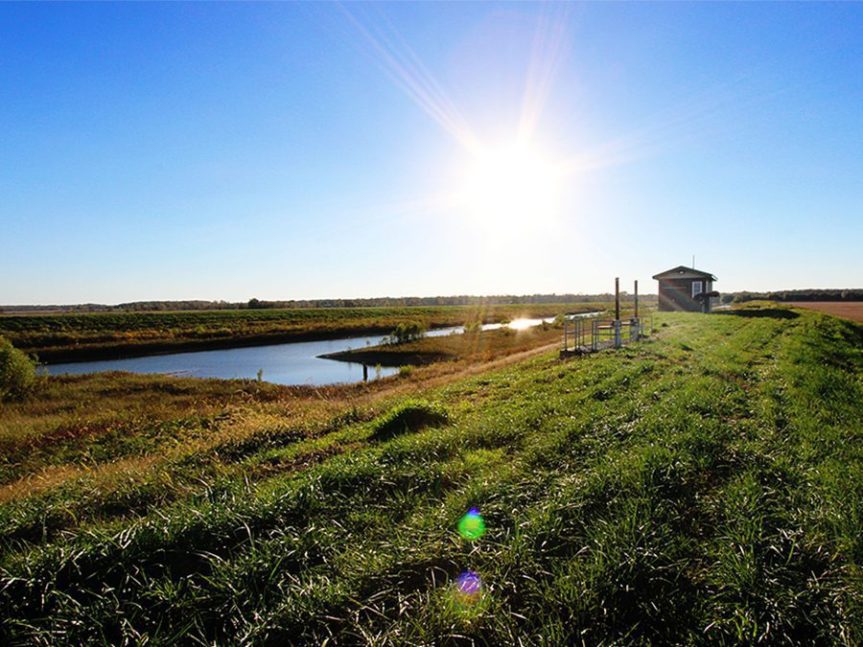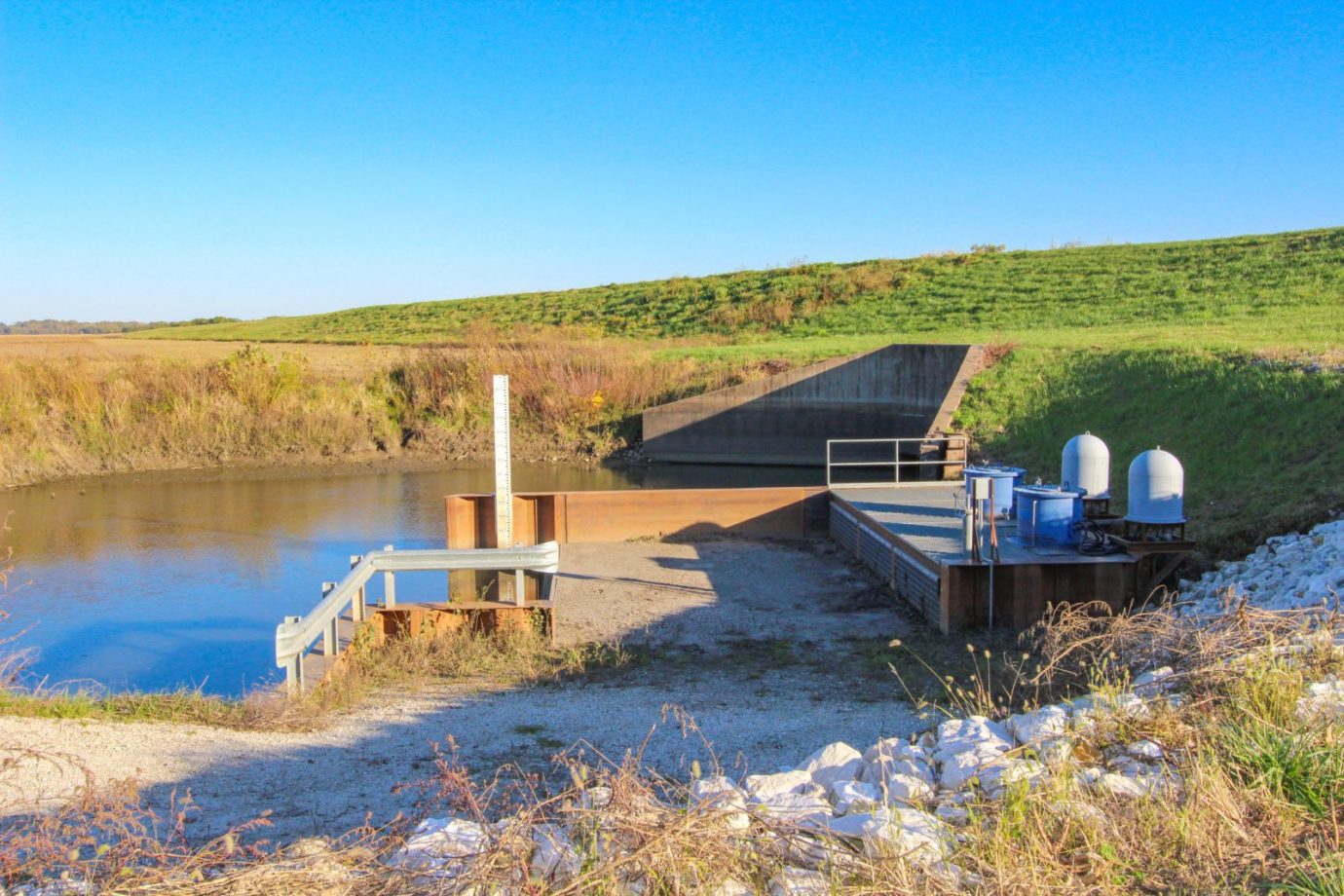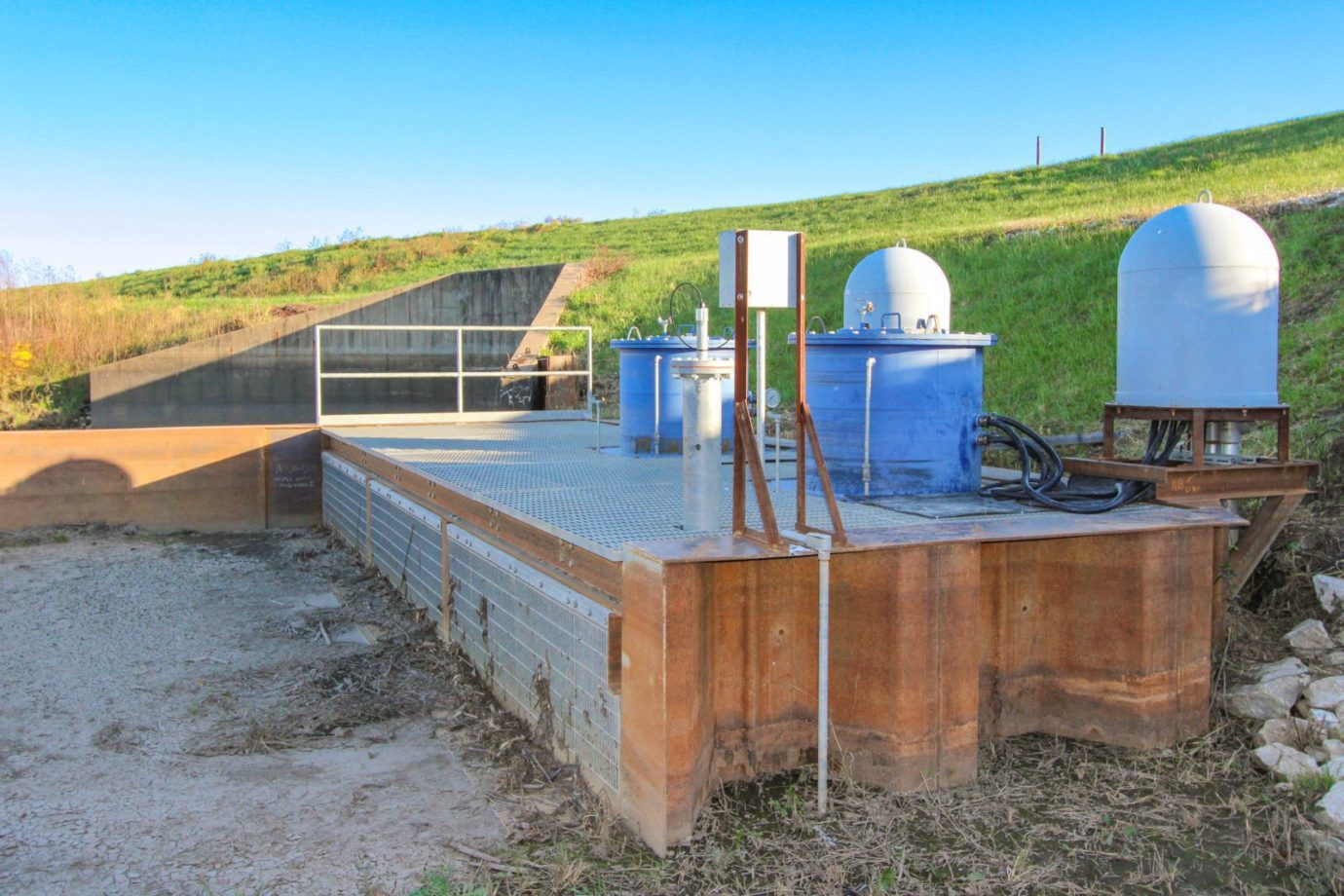Project Summary
The Indian Grave Drainage District provides protection from both Mississippi River and interior flooding for approximately 20,000 acres in Adams County, Illinois. Prior to 2010, the District received multiple years of severe damage due to interior flooding. The outdated pumping station coupled with an inefficient drainage ditch network led to a desire to make drainage improvements.
Klingner provided design services towards the construction of a pump intake structure to house two submersible pumps capable of pumping 80,000 GPM. The structure was designed with a third empty pump bay and third discharge pipe for future expansion. The design featured electric motor driven submersible pumps with variable frequency drive, telemetry, and SCADA. These features are all protected against the 500-year flood. The pump station was also equipped with a siphon recovery system for increased efficiency.
Klingner performed the initial planning and siting of this station, using advanced hydrologic modeling to map the ponding differences that would result in the addition of pumping at different locations and in different capacities. The performance of this analysis allowed Klingner to formulate a benefit:cost ratio for many different scenarios to assist the Drainage District in the decision making process for the pump station location and capacity selection.
Prior to construction, Klingner performed permitting services on behalf of the Drainage District. Klingner pursued and acquired a Section 408 permission from USACE to install the station due to modifications to the existing federal levee. This project was one of the first successful Section 408 permission requests executed in the Rock Island USACE District.
Additionally, Klingner worked with an electrical contractor towards the conversion of Indian Grave District’s original pump station that was constructed in 1950. This station was previously comprised of three vertical pumps driven by diesel engines; however, the District elected to convert one diesel motor to an electric motor based upon diesel cost and the potential increased efficiency. Klingner assisted in the layout, design, and permitting for the new electric motor and right-angle gear that would replace the existing diesel engine and right-angle gear.







